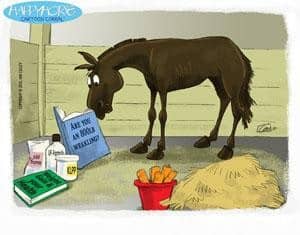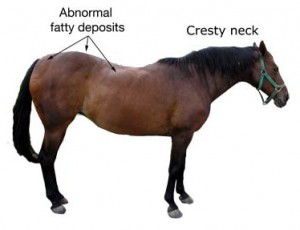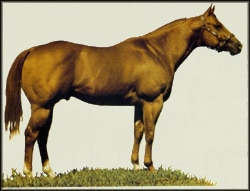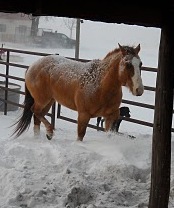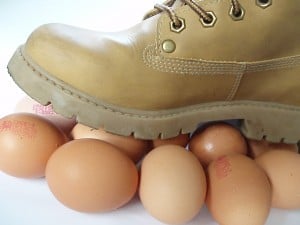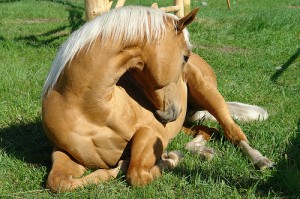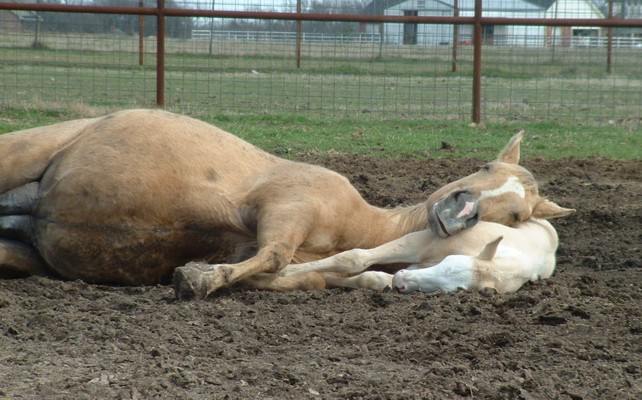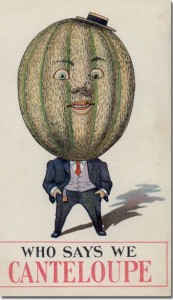 The old saying is, “You are What you Eat.” I agree with that, to a point. I mean, if you eat a lot of fat, you’re likely to end up fat. On the other hand, if you eat a lot of asparagus, you’re not going to turn green. One can only take this sort of general statement so far.
The old saying is, “You are What you Eat.” I agree with that, to a point. I mean, if you eat a lot of fat, you’re likely to end up fat. On the other hand, if you eat a lot of asparagus, you’re not going to turn green. One can only take this sort of general statement so far.
At any rate, as I pointed out when I did my analysis of equine nutritional supplements in 2011, most horses have their nutritional requirements satisfied by just three things: 1) enough good hay to satisfy their caloric needs, 2) water, and 3) a salt block (probably). However, there are disease certain conditions of the horse that can benefit from special diets, that is, diets that are targeted towards helping solve whatever the problem is. So, for your convenience, here are a few good and important ones, so you don’t have to go trying to make sense of all of the different suggestions that are out there on the net.
INSULIN RESISTANCE/METABOLIC SYNDROME
This condition is increasingly recognized as a problem in horses, as well as humans, and they are somewhat related. Insulin regulates sugar (glucose) in the horse’s blood; for some reason, horses that have insulin resistance become less sensitive to insulin’s effects. This means that more insulin than would normally be required is needed to keep blood sugar concentrations within normal amounts, especially after a meal high in starch and/or sugar. Nobody is really sure why it happens – there may be a genetic component. You’re recognize these horses as “easy keepers,” you know, the ones that you don’t have to feed very much.
Unregulated IR horses get fat, and fat horses have all sorts of problems. So, to help your horse with insulin resistance, here are some nutritional tips:
1. Keep proper body condition. You don’t want to see your horse’s ribs, but you should be able to feel them easily. Exercise helps here, too (he wrote, typing away on the computer).
CLICK HERE for a link to information about body condition scoring in horses.
2. Avoid pasture grazing in the spring and fall, when grasses are growing rapidly, have less fiber, and more sugar.
3. Feed hay with low levels of sugars (soluble carbohydrates). Oat and rye grass hays have more sugar than do timothy hay or orchard grass hays. Alfalfa is OK, but it’s got more calories than does grass hay, so you have to watch that your horse doesn’t get fat. Clover hay has lots of sugar, and should probably be avoided. Moderate quality grass hay is probably best.
Two other notes. To keep sugars down, many people soak their horse’s hay, to get the starch out. That’s OK, but it’s pretty imprecise, and you can also soak other nutrients out of the hay. The other thing is that there are TONS of low starch feeds available, and they’re OK, but may not offer much overall advantage over the hay, water, and exercise (see below).
4. Beet pulp and soy hulls have low levels of sugars, and can be used for extra calories, if needed. Avoid other grains. Extra fat is OK, too, if your horse needs more calories (no sugars at all). There are also a number of commercially available low-starch feeds.
5. Don’t bother with supplements like chromium or magnesium; research is showing them to be ineffective.
BY THE WAY – these are pretty good rules to follow with any horse, to help keep him from getting too fat.
AND ONE OTHER THING: Most fat horses don’t have insulin resistance; they’re just fat. And one thing that you should do for your horse, whether he’s fat or has IR is to give him plenty of exercise. In fact, exercise really helps insulin do it’s job. Effective, costs nothing at all, and it’s healthier for everybody.
HYPP (Hyperkalemic Periodic Paralysis)
HYPP is a muscle disorder caused by a genetic defect – CLICK HERE to learn more. The disorder affects muscle cell membranes, and it has been identified in descendents of the American Quarter Horse sire, Impressive. Hyperkalemia, which is a really “impressive” word for too much potassium in the blood, causes the muscles in the horse to contract more readily than normal. Affected horses have sporadic episodes of muscle tremors or paralysis, depending on how bad the problem is. Here’s some things you should do with the diet of an HYPP horse.
1. Avoiding high potassium feeds such as alfalfa hay, brome hay, canola oil, soybean meal or oil, and molasses.
2. Feed Timothy or Bermuda grass hay, or grains such as oats, corn, wheat and barley, or beet pulp.
3. Pasture is usually OK – there’s so much water in pasture grass that horses can’t eat much potassium.
4. Feed several times a day.
5. Provide regular exercise (for you, too, for that matter).
6. Feeding salt (NaCl) or grain on a regular basis may also be helpful (grain is relatively low in potassium).
PSSM (Polysaccharide Storage Myopathy)/Tying Up/Shivers
While these conditions are not necessarily the same, horses affected with any of the conditions – which all cause problems that look like the horse is having muscle cramps – have trouble with metabolizing carbohydrates. So, the nutritional goal for these horses is to provide no more than 15% total daily calories from starch and sugar, and at least 20-25% of total daily calories from fat. Just about any kind of hay is OK – the key is got get fat into their diet.
Dr. Beth Valentine, at Oregon State University, has developed a diet for horses that can benefit from extra fat. CLICK HERE to learn more.
LAMINITIS
While there’s no specific diet that can reverse laminitis once it has started, the key to preventing laminitis is to 1) Not let your horse get fat, and 2) Limit his intake of easily digestible sources of carbohydrates. There are a couple of potential sources of those in your horse’s diet.
1. Limit access to pasture. While fresh grass pasture is the most “natural” and least expensive way to feed horses, and good quality pasture can be a complete nutritional diet for horses, it can also be a potential dietary land mine. Access to lush pasture has been attributed for almost 50% of all cases of laminitis in areas where horses could get to pasture.
– Keep the horse off pasture until the grass is mature
– Limit grazing time to a couple of hours each day
– Graze in the afternoon – carbohydrates in grass peak in the middle of the day, thus, you may want those grazing hours to be in the afternoon.
– Put a grazing muzzle on the horse (although it’s easy to sympathize with the frustration that a horse must feel when he’s stuck out in a lush pasture, unable to eat the grass).
2. Offer moderately good quality grass hay to your horses in pasture. If the grass is lush and full of water and easily digestible carbohydrates, horses will consume the hay, even though there’s lots of green stuff for them to eat in the field, to fill their fiber needs.
3. Limit your horse’s access to whole or processed grains. Most horses don’t need grain and are better off without it. Like lush pasture, grains are high in easily digestible carbohydrates and very low in fiber. This is the perfect dietary prescription for developing laminitis.
CLICK HERE to learn more about laminitis.
CLICK HERE if you want to learn how to walk on eggs.
OBESITY
OK, this is – or at least should be – an easy one.
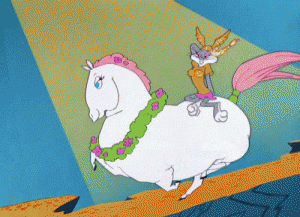 It’s not healthy for your horse to be fat. Fat makes it harder for horses to lose body heat; in southern California, keeping a horse fat in the summer time is akin to torture. The ideal body condition for a horse is one where you can’t see his ribs, but you can feel them easily. If you can’t feel them at all, or if it takes a running start for you to get enough momentum to find his ribs, then your horse needs to lose weight.
It’s not healthy for your horse to be fat. Fat makes it harder for horses to lose body heat; in southern California, keeping a horse fat in the summer time is akin to torture. The ideal body condition for a horse is one where you can’t see his ribs, but you can feel them easily. If you can’t feel them at all, or if it takes a running start for you to get enough momentum to find his ribs, then your horse needs to lose weight.
Here are some tips:
1) Give your horse more exercise.
2. Weigh the feed. Feeding by “flakes” tends to give a horse too much to eat, and is wasteful, and expensive. A horse should be getting 1.5 – 2% of his body weight per day in feed – that’s 15 to 20 pounds for a 1000 pound horse (say, a normal Quarterhorse).
3. Substitute grass hay for alfalfa hay – there are fewer calories in grass hay, so your horse can eat the same amount of feed, get fewer calories, and keep his weight down.
4. Feed healthy treats. Carrots and watermelon rind have fewer calories than things like a pound of oats or molasses soaked horse treats. You can still show your horse you love him by feeding him, just do the right thing.
COLIC
First things first. There’s no specific diet or dietary supplement that prevents colic. There are several supplements that SAY they prevent colic, and they’ll even offer to insure your horse for colic surgery if you buy them. If that’s your worry, buy insurance, don’t buy the supplement. That said, some important nutritional considerations when it comes to colic are:
1. Feed regularly, at least twice a day. There doesn’t seem to be any advantage to feeding more than three times a day, however.
2. Don’t feed grain, or feed as little as possible. Never feed more than 2 1/2 pounds in one feeding. Too much grain can cause all sorts of nutritional problems.
3. Feed the best quality hay available.
4. Make sure that your horse always has access to unlimited amounts of fresh, clean water. If it’s cold, try to make the water warm, so he’ll drink more.
Diet isn’t everything, but it’s sure an important thing. You can’t prevent every condition of the horse with nutrition, but certain conditions do benefit from a sensible approach to feeding. Special diets don’t have to be expensive, and they don’t have to be hard.

